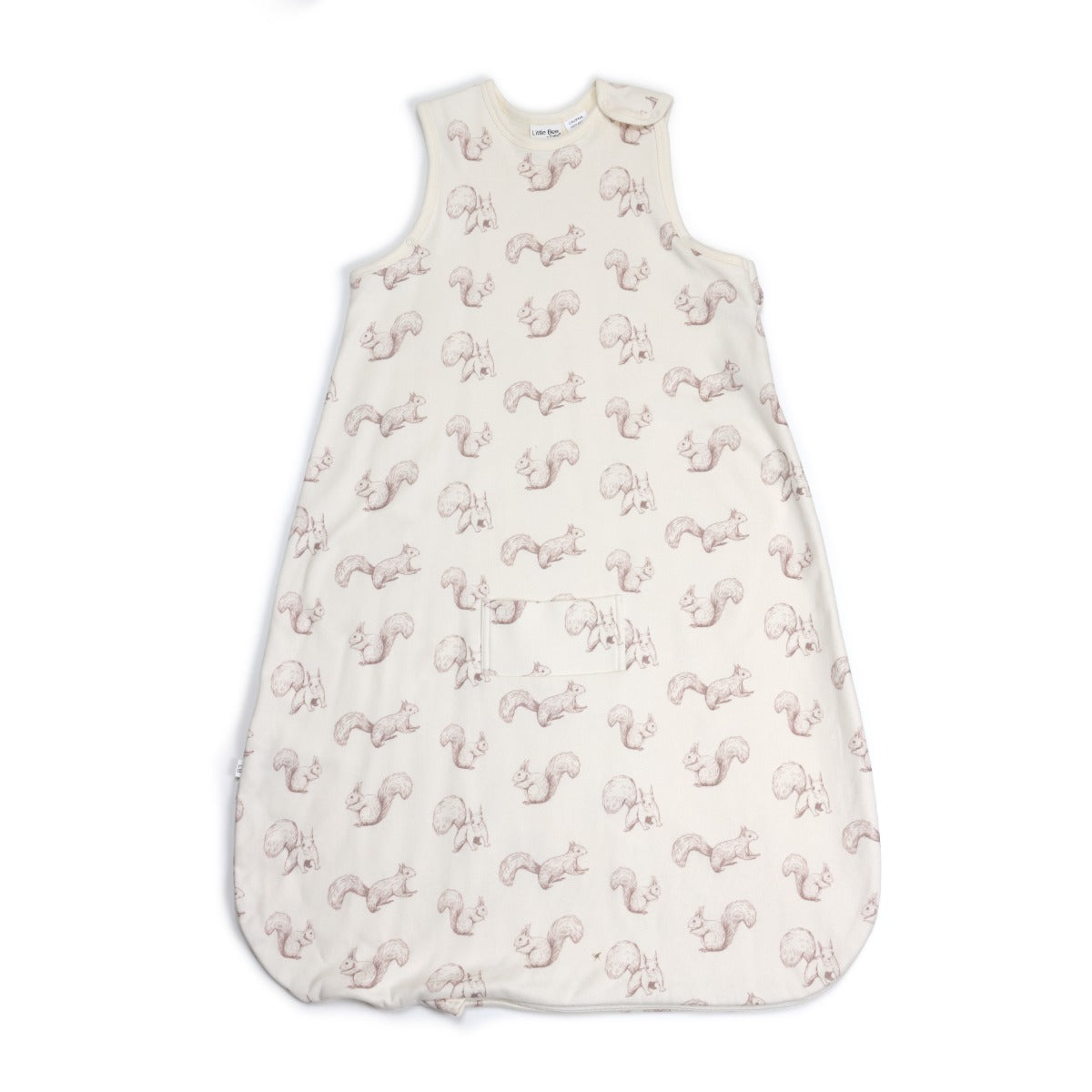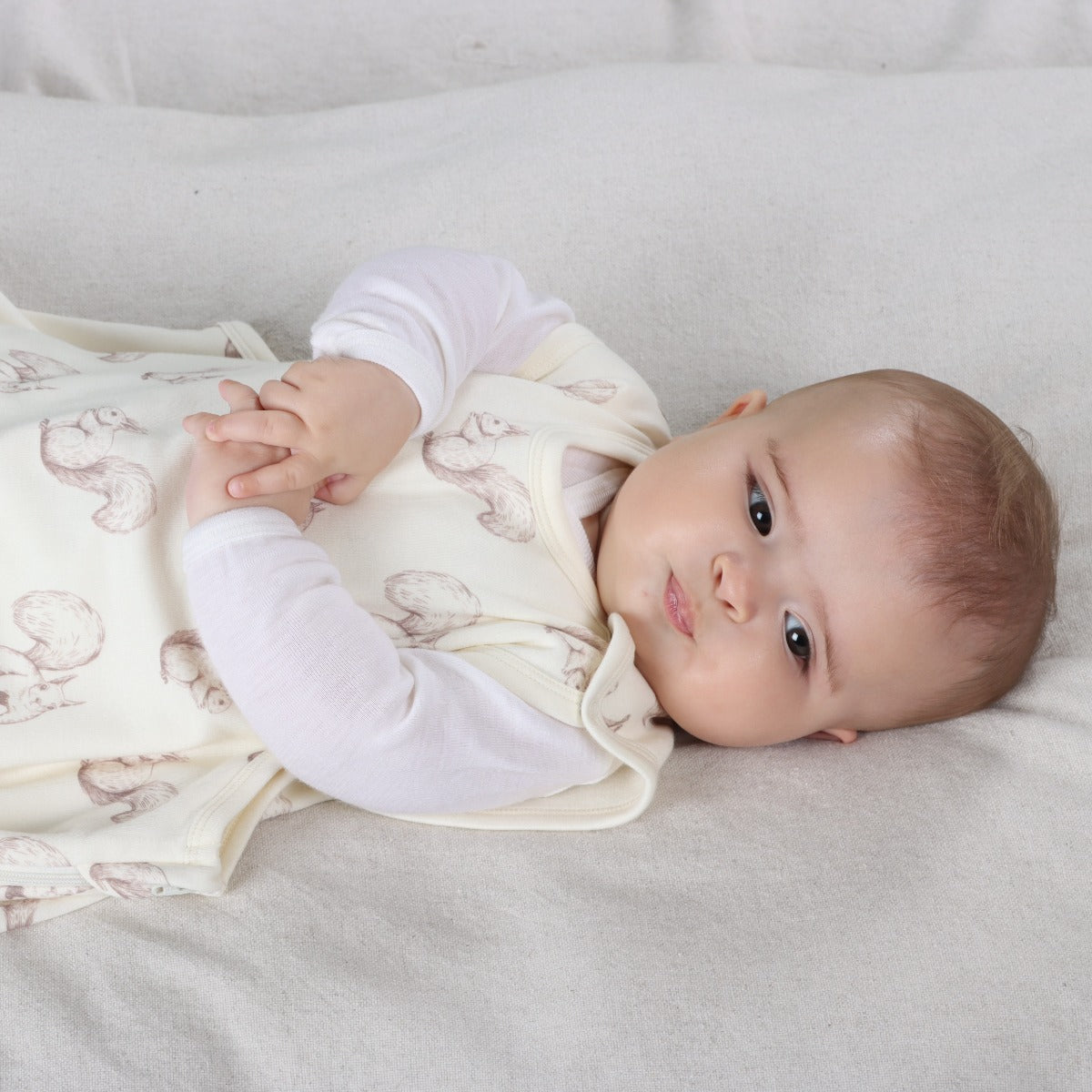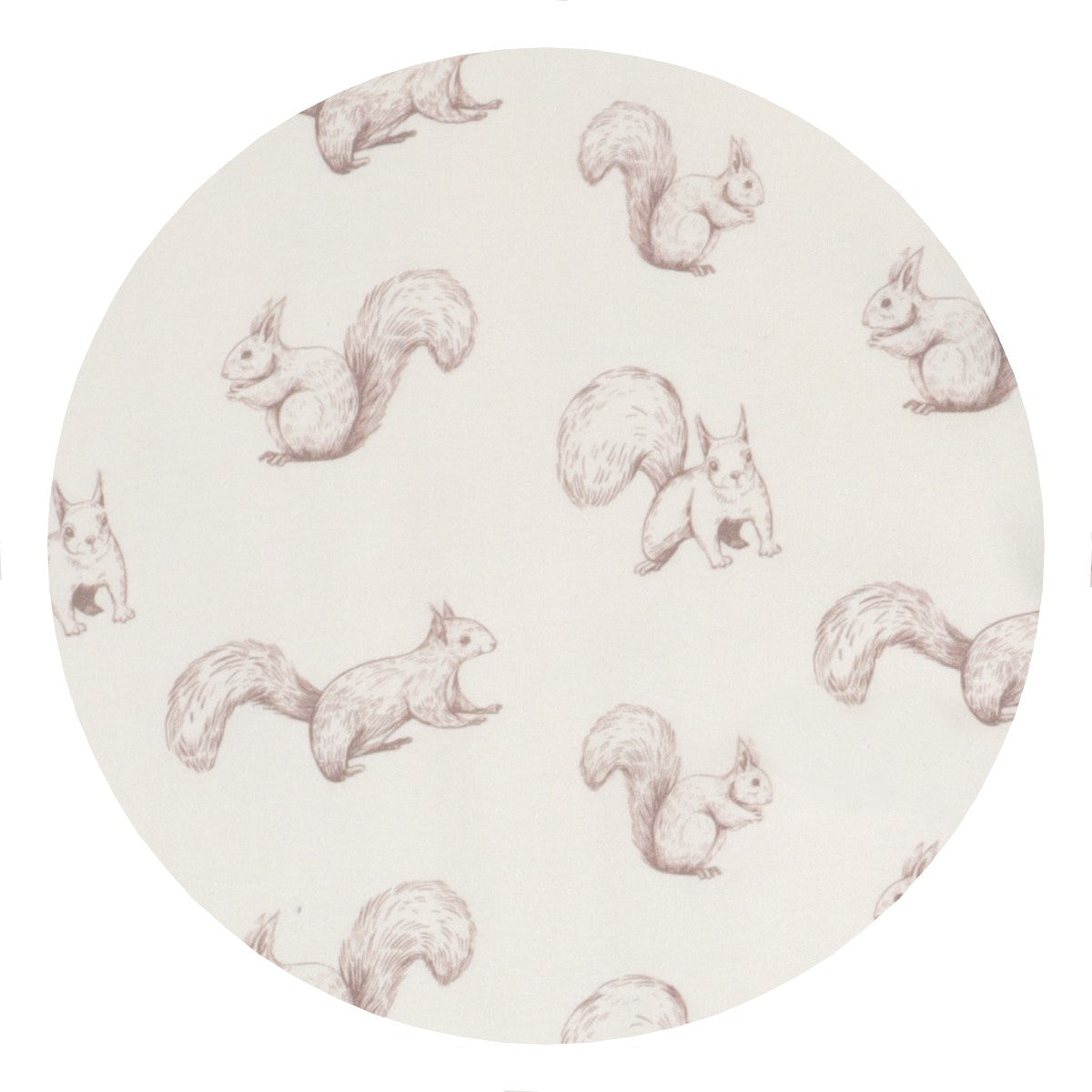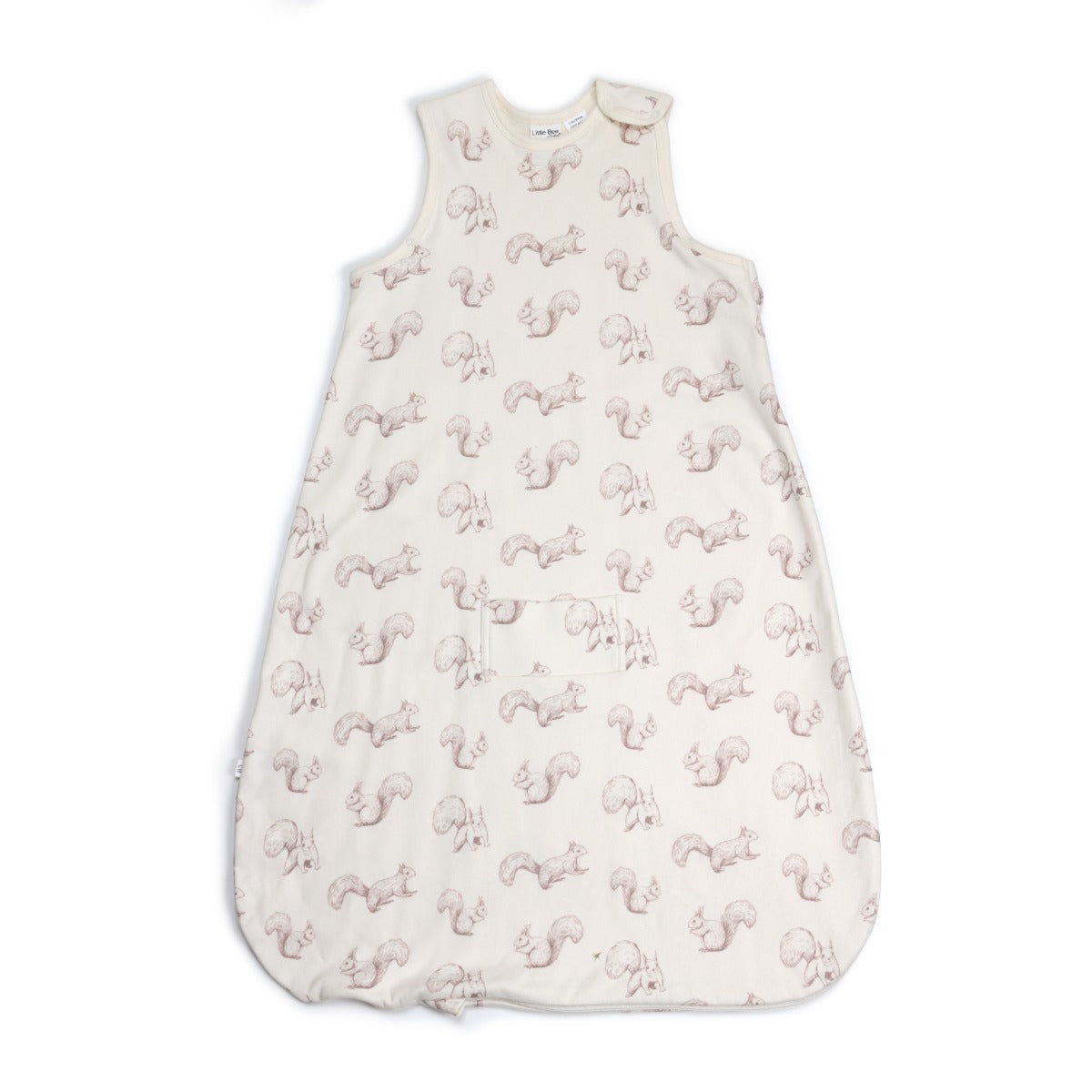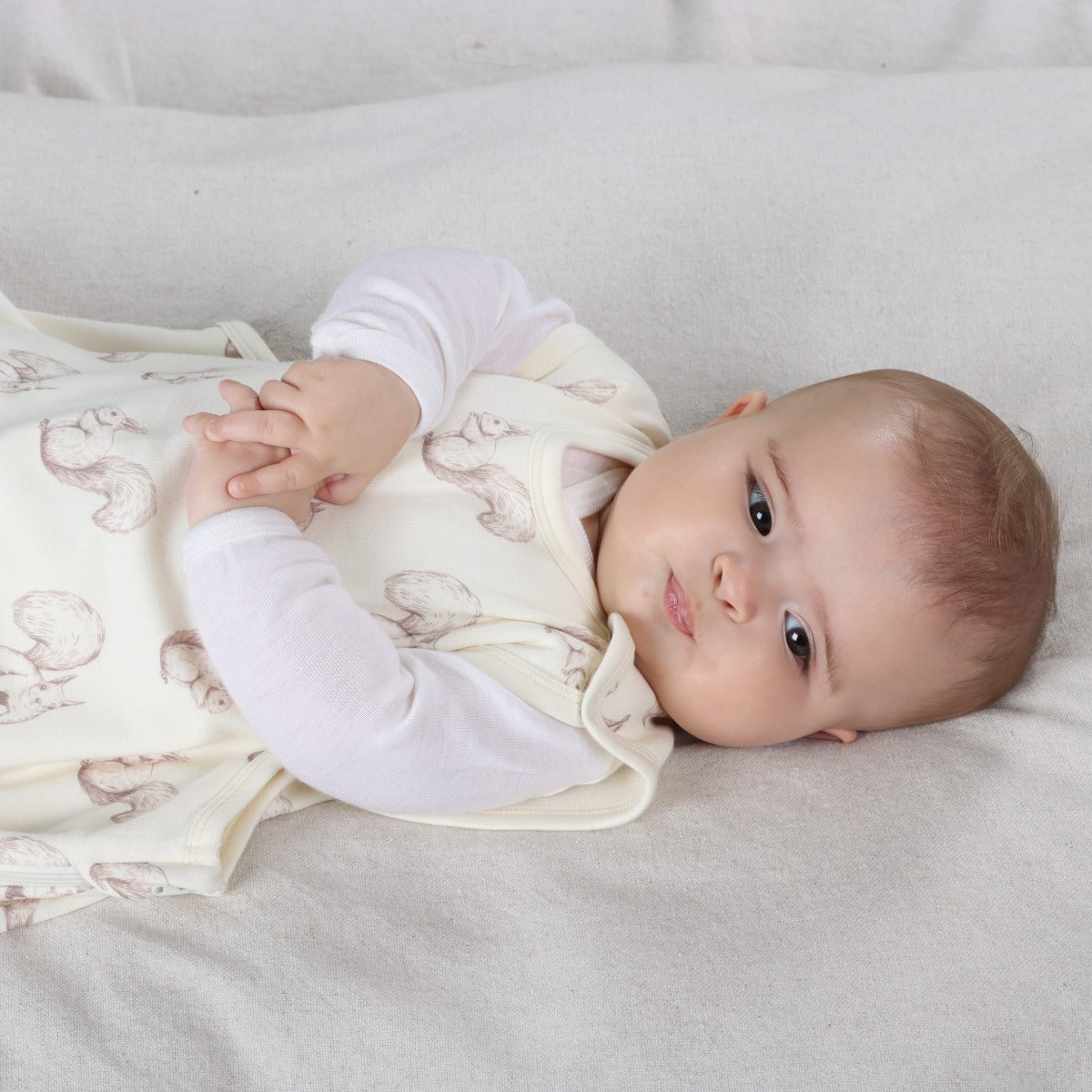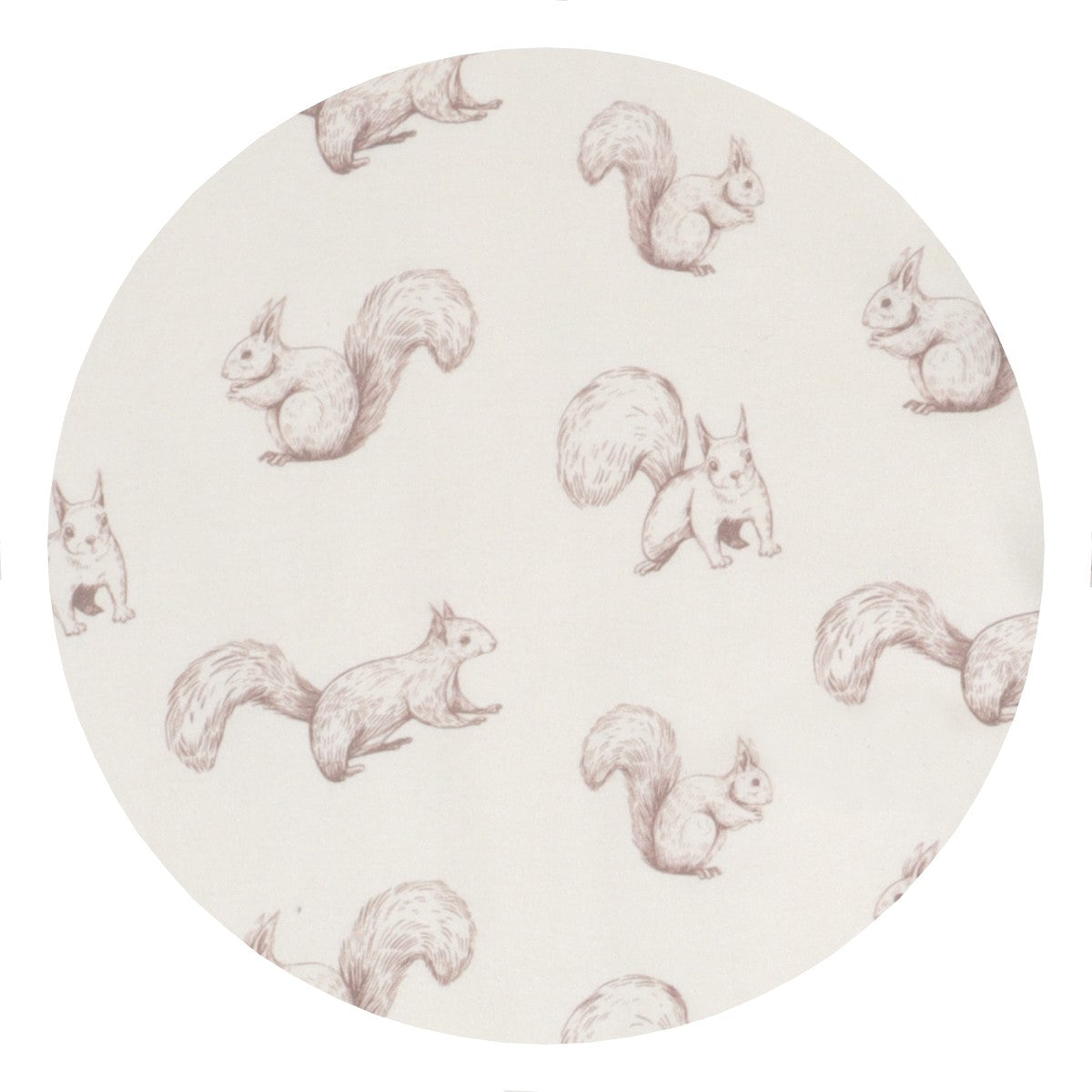All Season Sleeping Bag
All Season Sleeping Bag
SKU:LB206S
Clothing Prem to 18 Months
| Size | Age Guide | Weight | Height |
|---|---|---|---|
| Premature | Premature or Small Newborn | Up to 4Kg | Up to 55cm |
| Newborn | 0-3 months | 4-6Kg | Up to 62cm |
| 3 Month | 3-6 months | 6-8Kg | Up to 68cm |
| 6 Month | 6-12 Month | 8-10Kg | Up to 76cm |
| 12 Month | 12-18 Month | 10-12Kg | Up to 84cm |
| 18 Month | 18-24 Month | 12-14Kg | Up to 92cm |
Clothing 2 to 6 Years
| Size | Age Guide | Height | Chest | Waist | Hip |
|---|---|---|---|---|---|
| 2 Year | 2-3 Years | Up to 100 cm | 56 | 51 | 58 |
| 3 Year | 3-4 Years | Up to 105 cm | 58 | 53 | 60 |
| 4 Year | 4-5 Years | Up to 110 cm | 60 | 55 | 62 |
| 5 Year | 5-6 Years | Up to 115 cm | 62 | 57 | 64 |
| 6 Year | 6-7 Years | Up to 120 cm | 64 | 59 | 66 |
Beanie Size Guide
| Size | Head Circumference | Age Guide |
|---|---|---|
| Premature | 31-35 cm | Premature or Small Newborn |
| Newborn | 35-40 cm | Newborn |
| Small | 40-43 cm | 3-6 Months |
| Medium | 43-47 cm | 6-18 Months |
| Large | 47-52 cm | 18-3 Years |
Sunhat Size Guide
| Size | Head Circumference | Age Guide |
|---|---|---|
| Newborn | 37-40 cm | Newborn |
| Small | 40-43 cm | 3-6 Months |
| Medium | 43-46 cm | 6-12 Months |
| Large | 46-49 cm | 12-24 Months |
| Xtra Large | 49-54 cm | 2-4 Years |
Sleep Pods Size Guide
| Size | Weight | Age Guide | Measurement(Back to Hem) |
|---|---|---|---|
| Newborn | 0-6 kgs | 0-3 Months | 60.5 cm |
| Small | 0-8 kgs | 3-6 Months | 66 cm |
Booties Size Guide
| Size | Age Guide |
|---|---|
| Newborn | 0-3 Months |
| Small | 3-6 Months |
| Medium | 6-12 Months |
| Large | 12-18 Months |
Pretty Brave Baby
| Foot Length (mm) | Insole Length (mm) | EU | UK | Age | INT |
|---|---|---|---|---|---|
| 95-104 | 110 | 16/17 | 2 | 0-6m | S |
| 104-114 | 118 | 18 | 3 | 6-12m | M |
| 114-123 | 127 | 19/20 | 4.5 | 12-18m | L |
| 123-137 | 142 | 21/22 | 5.5 | 16-22m | XL |
Pretty Brave 1st Walker
| Foot Length (mm) | Insole Length (mm) | EU | UK | Age |
|---|---|---|---|---|
| 114-120 | 125-128 | 19 | 3 | 1 yr |
| 120-126 | 132-135 | 20 | 3.5 | 1-2 yrs |
| 126-132 | 138.5-141.5 | 21 | 4.5 | 1-2 yrs |
| 132-138 | 145-148.5 | 22 | 5 | 2 yrs |
Crywolf Swim Nappy
| Size | Length (waist to crotch) | Crotch Width (side to side) |
|---|---|---|
| 0-1 yr | 1-2 yrs | |
| 37 | 38 | |
| 14.5 | 15.5 |
Crywolf Rash Suit
| Size | Length (back neck to crotch) | Chest (arm to arm) | Waist (side to side) | Sleeve (neck to cuff) | Neck Opening(diameter) |
|---|---|---|---|---|---|
| 6-12 Months | 1 yr | 2 yrs | 3 yrs | ||
| 40 | 42 | 44 | 46 | ||
| 25 | 26 | 27 | 28 | ||
| 24 | 25 | 26 | 27 | ||
| 30 | 31.5 | 33 | 34.5 | ||
| 13.25 | 13.25 | 13.8 | 14.3 |
In stock
Couldn't load pickup availability
Overview
Overview
Soft to the touch gentle on their skin. Little Bee Merino brings you a timeless design made with comfort in mind. Little Bee Merino offers classic styles created to pair with any outfit. Little Bee’s Merino collection brings year-round staples to your little ones wardrobe providing baby with the essentials they need in those first years of life.
A cosy cocoon for your little one at night-time our Little Bee Sleeping Bag provide baby with the comfort they deserve as they dream at night. Featuring a zip up the size and domes on the shoulder this garment is simple to get baby in and out of making night-time changes quick and simple. Lined with single jersey merino our Little Bee sleeping bag offers a safe sleep solution for you little one to keep them warm at night.
Made In China
What's included
What's included
Fit & Care
Fit & Care
Delivery and Returns
Delivery and Returns
- Delivery: Free within NZ on orders over $100 (excluding bulky items) or $8 standard shipping
- Returns: Accepted within 14 days of receipt with proof of purchase
- Some items are excluded from returns including sale items, hardware, car seats, prams, monitors and personal items - please click here for the full list.
Share this product
Recently viewed products
Related Blogs
How to Dress your baby for Sleep
Dressing Your Baby for Sleep – A Seasonal Guide Knowing how to dress your baby at bedtime can feel like a bit of a guessing game – especially when the seasons start to change. Should you add another layer? Is the room too cool? Are their hands meant to be that cold? To help take the guesswork out, we’ve put together a simple guide to dressing your little one for sleep using our Dimples sleeping bags and sleepwalkers, without any additional blankets. A Gentle Reminder Every baby is different, so this guide is just that – a guide. The best way to check if your baby is at a comfortable temperature is by feeling the back of their neck. It should feel warm, not hot or sweaty. Hands and feet can feel cooler and aren't always a reliable indicator. Baby’s body temperature naturally dips during the early morning hours, so if your little one is waking more often than usual, it might be worth checking if they’re feeling a bit chilly. And remember – when it comes to sleep, it’s safer for babies to be slightly cool rather than too warm. Choosing the Right Layers When dressing your baby, natural fibres like Merino wool or cotton are best. These breathable fabrics help regulate temperature and keep your baby comfortable through the night. Merino in particular is a year-round superstar – its clever fibres trap warm air on cooler nights and allow heat to escape on warmer ones, making it ideal for all seasons. At Dimples, all of our garments are designed especially for keeping little ones cosy and safe. We recommend having at least two sleeping bags or sleepwalkers on hand for each season, so you’re always prepared for the inevitable midnight messes. Ideal Room Temperature The ideal temperature for a baby’s room is between 16–20°C. If you’re using a heater or heat pump, setting the thermostat to 18°C will help maintain a steady climate through the night without overheating. Monitoring the Room Many baby monitors display room temperature, which can be a helpful reference.Alternatively, something like the Shnuggle Moon Nightlight can be used to keep an eye on the room temperature. It uses a handy colour display to show whether the room is sitting within the ideal range. Signs Your Baby May Be Too Warm Waking more frequently than usual Sweaty back or neck Damp hair Shallow or rapid breathing If you notice these signs, try removing a layer or adjusting the room temperature. A cool, damp cloth on the back of their neck can help if they’re feeling very warm – and always check for fever if you’re concerned. Signs Your Baby May Be Too Cold Restless sleep or unusual movement around the cot Rolling onto their stomach Catnapping during the day Waking around 5am If any of these sound familiar, consider adding a layer, using a warmer sleeping bag, or gently warming the room. Dressing your baby for sleep doesn’t have to be stressful. With a few key pieces and a little trial and error, you’ll find the sweet spot that keeps them cosy and safe – all night long 😴 Explore our full sleepwear range to find breathable, natural fibre options for every season.And if you’re ever unsure, we’re here to help.
Learn moreWhy Carrycots Are One of Our Best Sellers
Carrycots – Essential or Nice to Have? How a Carrycot can make a new parent’s life easier When preparing for your baby’s arrival, the list of must-have essentials can seem endless—carrycots, capsules, bassinets, and buggies, all competing for your attention. Among these, carrycots often sit in a grey area, leaving parents wondering if they’re truly necessary. However, there are several reasons why carrycots are one of Dimples’ best-sellers, and we’re here to explain why they could make your life a whole lot easier. What is a Carrycot? A carrycot is a lightweight, portable bed designed for babies up to around three to six months old (or about 10kg). Unlike a traditional bassinet or Moses basket, a carrycot attaches to your stroller, making it perfect for sleeping while you’re out and about. Its flat, firm mattress ensures your little one can lie down comfortably, and the design keeps them safe, supported, and relaxed while they nap. As your baby grows, they’ll eventually outgrow the carrycot, but for the first few months, it provides a cosy, familiar space that’s easy to move with you. Why Do You Need One? You’ve likely already invested in a capsule for car trips and a bassinet for naps at home, so you might be wondering where a carrycot fits into the mix. Let’s take a closer look at the benefits it offers: Carrycots vs. Capsules for Sleeping Capsules are often designed to easily attach to your stroller for convenience, allowing you to transfer your sleeping baby from the car to the stroller without waking them up. However, experts caution against leaving your baby in a capsule for extended periods. Babies need to lie flat to keep their airways open, and when they're in a capsule, their heads can flop forward, which could compromise their breathing. A carrycot, however, provides a flat surface for your baby, ensuring proper alignment and safe sleep. While it can be tempting to leave your baby in the capsule for longer outings, a carrycot offers a far safer sleep solution for extended naps or trips to the park. Moving them from capsule to carrycot after a quick car trip helps keep their sleep environment safe and comfortable. Take a Walk While They Snooze One of the perks of a carrycot is the ability to get outside and enjoy some fresh air while your baby naps peacefully. After feeding or playtime, simply attach the carrycot to your stroller, and off you go! The gentle movement of the stroller, combined with the outdoor sounds, is often just the right combination to lull your little one into a restful sleep. Carrycots are designed to be outdoors-friendly, with weatherproof fabrics, adjustable canopies, and compatible rain and sun covers, so your baby stays protected no matter the weather. Even better, when your baby is deep in sleep, you can easily unclip the carrycot from the stroller and bring them inside to continue their nap. That means you get to enjoy a quiet moment to yourself while your baby stays snug and safe. Carrycots vs. Portacots for Overnight Stays When it comes to overnight visits, whether to Grandma’s house or a weekend getaway - a full-sized portacot can be a hassle to pack and set up. A carrycot, on the other hand, is compact and easy to transport, making it the ideal sleep solution for short stays. With a firm mattress and familiar surroundings, your baby is more likely to settle quickly in a carrycot, even in a new environment. Carrying a bulky portacot for a quick trip or family visit can feel like overpacking, especially when you have a simple, lightweight carrycot that does the job just as well. The convenience of clipping it onto your stroller for a walk, and then using it as a portable bed for overnight stays, gives you the best of both worlds. Say Goodbye to the Bassinet A bassinet or Moses basket can take up a fair amount of space in your home, and while they're lovely for the first few months, they’re not always necessary if you have a carrycot. Many parents find that a carrycot serves as both a primary sleep spot at home and a portable solution for outings. Since a carrycot is designed for safe sleep, you can use it as your baby’s designated napping spot - whether at home, in the park, or at a friend’s house. Plus, since it’s only useful for a limited time, you get the most out of it by making it your go-to sleeping solution in those early months. Carrycots vs. Lie-Flat Strollers Many strollers are suitable for newborns, but most require the baby to be strapped in. If your baby is swaddled or sleeping peacefully, it can be a hassle to unstrap them and disrupt their comfort. With a carrycot, you can avoid all those buckles and straps. Simply place your baby in the carrycot, and you’re good to go - no need to worry about disturbing them or removing their swaddle. This makes the carrycot a much easier and more comfortable option for those first few months. What to Look for in a Carrycot Choosing the right carrycot is about more than just size - it’s about convenience, comfort, and safety. Here are some key features to look for: Certified for overnight sleep: If you plan to use the carrycot for naps and nighttime sleep, ensure it’s certified for overnight use. Weatherproof accessories: Look for a carrycot with a generous canopy, plus optional rain and sun covers, especially if you’ll be using it outdoors. Easy to carry: While the carrycot will often be attached to your stroller, you’ll also need to carry it at times. Make sure it has sturdy, comfortable handles that make it easy to transport. Easy care: Babies can be messy, so choose a carrycot with machine-washable components like the mattress cover or liner. Easy to connect: You don’t want to struggle with complicated clips when your baby is having a fussy moment. A carrycot that’s easy to attach and detach from the stroller will save you time and frustration. Compatibility: Ensure the carrycot fits securely on your stroller. The combination of a carrycot and stroller is crucial, as you’ll use it for many months to come. Final Thoughts While not essential for everyone, many parents find it a really useful addition in those early months – giving their baby a safe, flat sleeping space that’s easy to move from stroller to indoors without disturbing precious naps. Whether you’re out for a walk, visiting family, or just needing somewhere for baby to rest during the day, a carrycot can help simplify life a little. If you’re unsure whether a carrycot is the right fit for your family, feel free to get in touch or pop into store – we’re always happy to help you figure out what’s best for you and your baby. We have some amazing bundles to choose from, as well as a range of choices to suit you. Check out Dimples’ range of carrycots here.
Learn moreKeeping Winter Bugs Away from your Baby
Keeping your baby well and cosy this winter Winter can be a challenging time when you have a little one, especially if they’re brand new. 🐣 Alongside keeping baby warm and dry, you’re also up against colds, flu, and other winter bugs that seem to be everywhere. Because babies’ immune systems are still developing, they’re more vulnerable to infections. Their tiny nasal passages and lungs also mean illnesses like colds and flu can affect them more than adults. But don’t worry—there are plenty of ways to reduce their risk and help them recover quickly if they do catch something. Stay warm, stay comfy While “catching a chill” won’t cause a cold or flu, keeping your baby warm and dry helps their body focus on fighting off germs instead of battling the cold. Dress your baby in one extra layer than you’re wearing, and choose clothes that are easy to add or remove as they warm up or cool down. Keep your home temperature steady around 18 - 20°C for cosy comfort. Merino wool is a winter hero for babywear and bedding. Its natural temperature regulating properties keep babies warm without overheating, making it ideal for layering under pyjamas and sleepwear. Fuel their immune system Good nutrition is vital to support your baby’s developing immune system. Once they’ve started solids, offer a colourful variety of fruits and vegetables rich in vitamins and antioxidants. Frozen produce can be just as nutritious as fresh, especially during winter when fresh foods may have been stored for long periods. Avoid refined sugars and processed foods, which can impair immunity. When possible, prepare baby’s food from scratch to keep nutrient levels high. While supplements aren’t usually necessary for babies, some parents choose to use vitamin drops - just make sure these are used as a boost to a healthy diet and given in the correct amounts. Keeping germs at bay Reducing exposure to germs is one of the best ways to keep your baby healthy during winter. Handwashing is the frontline defence. Wash your hands thoroughly and frequently, especially after being in public places, changing nappies, or before feeding your baby. Teach older siblings to wash their hands immediately after coming home, and encourage good hygiene habits like coughing or sneezing into their elbows instead of their hands. If your baby is old enough to explore, regularly clean their hands as well, since babies often put toys and fingers in their mouths. When out and about, keeping your baby’s pram covered can help shield them from strangers’ coughs and sneezes or accidental touching. Regularly clean toys and surfaces baby frequently touches at home to limit germs. Avoid close contact with anyone who is unwell, and try to limit your baby’s time in crowded places during peak cold and flu season. If you’re still breastfeeding, it’s especially important to keep germs away - breastmilk passes vital antibodies that help protect your baby from many illnesses. This natural immunity boost makes hygiene and reducing exposure even more crucial. Hydration is key Breastfeeding also helps keep your baby hydrated and supported through winter. Regardless of feeding method, ensure your baby drinks enough breastmilk, formula, or water (if old enough) to prevent dry nasal passages and reduce infection risk, especially if you’re using heaters or air conditioning, which can dry the air. When sniffles strike Even with your best efforts, babies can still catch colds. If your baby starts showing signs of a runny nose or congestion, gentle relief can make a big difference. Nasal decongesters designed specifically for infants safely clear blocked noses, making it easier for them to breathe and sleep. Using a few drops of saline beforehand can help loosen mucus for easier removal. A chest rub can be especially helpful for sleep. Raising the head of their cot slightly and running a humidifier in their room can soothe irritated airways. While some parents like using eucalyptus rubs or essential oils, it’s best to apply these to bedding or sleepwear rather than directly on baby’s skin to avoid irritation. Having these supplies ready before cold season hits means you’re prepared to help your little one feel comfortable and recover quickly. Ready for a cosy, healthy winter? Our collection of beautiful merino babywear and bedding is designed to keep your baby naturally warm and comfortable all winter long. With merino’s breathable and temperature-regulating properties, you can feel confident your baby is snug without overheating. Shop the range here.
Learn more

